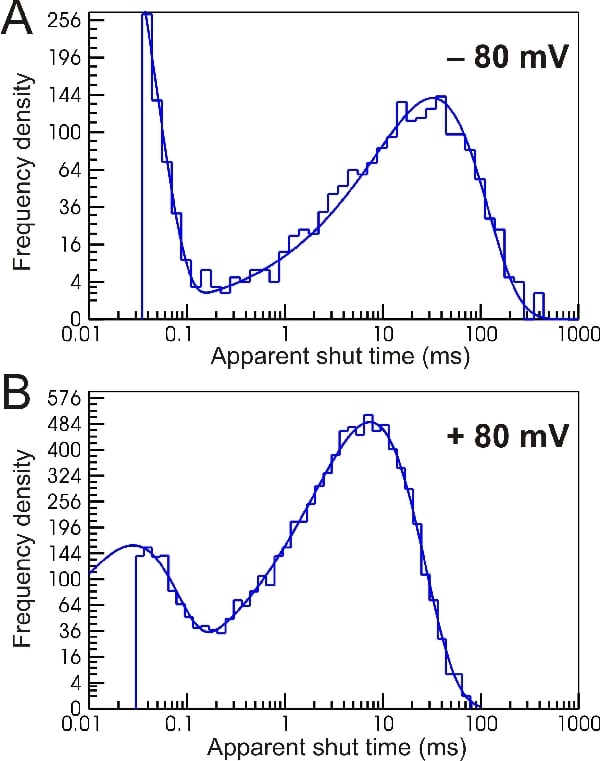Choline is believed to be an agonist with low efficacy on muscle nicotinic acetylcholine (ACh) receptors because of a slow channel opening rate constant (Grosman & Auerbach 2000). This makes it an attractive tool in the characterization of the single channel kinetics of gain of function mutants, in which the channel opening rate constant is increased beyond its wild-type value of about 50000 s−1 for ACh. Our mechanism-fitting analysis can resolve opening rates of up to at least 130000 s−1 (Burzomato et al. 2004), but an increase in channel opening rate of more than 4-fold would be hard to measure with ACh as agonist. We recorded choline-activated single channel currents in the cell-attached configuration from HEK293 cells transfected with human wild-type nicotinic ACh receptors (αβδε, transfection ratio 2:1:1:1). The apparent amplitude of single channel currents decreased at high choline concentrations. This suggests that choline, like other agonists (Ogden & Colquhoun 1985) blocks the channel pore and that the blockages are too brief to be resolved as closures. The Hill slope for this effect was nH = 0.81± 0.11 and a fit with a Hill- Langmuir equation (nH = 1) gives an estimate of the equilibrium constant for channel block as 7.6 ± 1.0 mM (n = 1-3 patches per point). Openings were detected using a time-course fitting procedure (program SCAN; http://www.ucl.ac.uk/Pharmacology/dc.html). Apparent open period and shut time distributions were plotted for several choline concentrations and transmembrane potentials. At low choline concentrations (up to 1 mM), channel activations were shorter than those elicited by ACh (below 1 μM). Mean burst length: choline 0.65 ± 0.08 ms (3 patches), ACh 3.4 ± 0.3 ms (7 patches); mean apparent number of openings per burst: choline 1.11 ± 0.01, ACh 2.23 ± 0.07 (P < 0.008 for both by randomisation test). The distribution of apparent shut times showed an obvious fast component (Fig. 1). This fast component was not detected in studies using SKM transition detection methods (Grosman & Auerbach, 2000). Typical shut time distributions in 10 mM choline at different transmembrane potentials are shown in Fig. 1 (A: −80 mV; B: +80 mV). The time constant of the fast component did not vary with the choline concentration but was slower at positive (51 ± 16 µs; n = 5 patches) than negative (13 ± 0.8 µs; n = 8 patches) membrane potentials (P = 0.0009). Since little channel block is expected at positive potentials, the fast component may provide information about the oscillations between the open and shut states. The interpretation of the brief shut time component in terms of mechanism is still uncertain, but its observation opens the possibility that choline may have a higher efficacy than has been supposed up to now.
University College London 2006 (2006) Proc Physiol Soc 3, PC29
Poster Communications: Is choline really a partial agonist on human muscle acetylcholine receptors?
Remigijus Lape1, Lucia Sivilotti1, David Colquhoun1
1. Pharmacology, University College London, London, United Kingdom.
View other abstracts by:
Figure 1. The distributions of apparent shut times from single channel recordings in 10 mM choline. Recording were made at two different membrane potentials -80 mV (A) and +80 mV (B).
Where applicable, experiments conform with Society ethical requirements.

